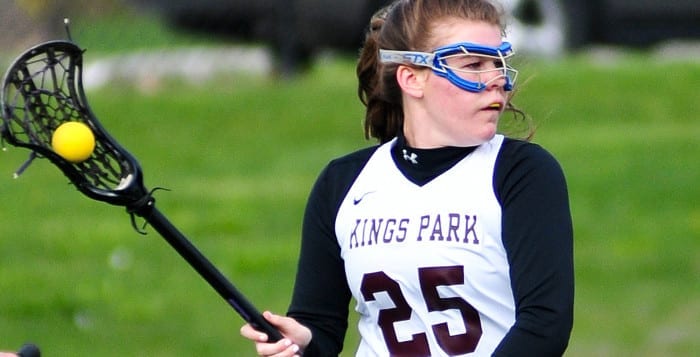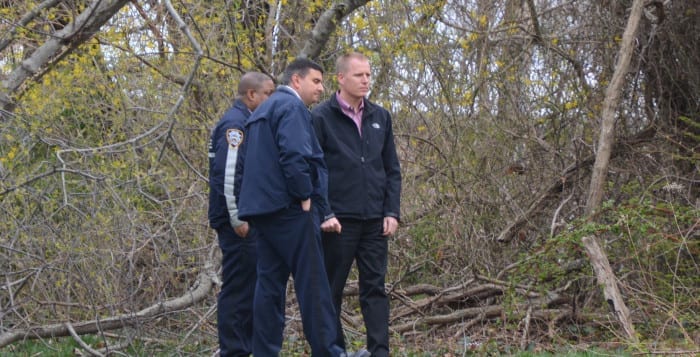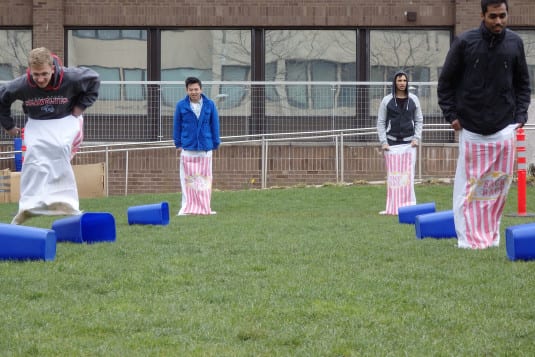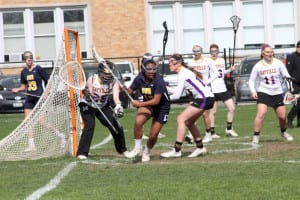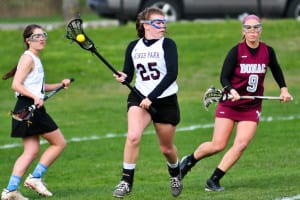
By Bill Landon
At 3-6, it was a must-win game for the Kings Park girls’ lacrosse team to keep its chances of a postseason appearance alive, with four Division II games remaining before the playoffs. The Bonackers of East Hampton/Bridgehampton/Pierson led by two, but the Kingsmen turned up the heat late in the first half to surge ahead by three and held onto that margin for most of the second half, to pull out a much needed win, 12-10, Monday afternoon.
“Coming in we thought they were a little better than us, but we knew we could beat them,” Kings Park sophomore Shannon Savage said. “We took our time, we worked together and we slowed it down on offense, and we didn’t force anything in the middle.”
The Bonackers struck first, but Kings Park junior Shannon Donovan evened the score early in the half.
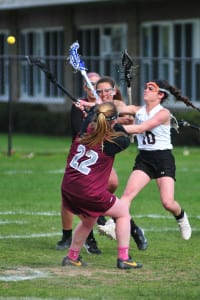
Again trailing by one, Kings Park junior Alexa Cebulski answered the call six minutes in, to retie the game, and sophomore Jillian Winwood drove her shot home next to give the Kingsmen their first lead of the game, 3-2.
Savage scored next to double the lead, but the Bonackers responded by rattling off four unanswered goals in just over three minutes of play to jump out in front, 6-4.
Cebulski and Winwood both found the cage with 10 minutes left in the half to again tie the game.
Savage, on a penalty shot, found the back of the net to edge ahead 7-6, and from there, Kings Park never looked back.
Kings Park junior Rachel Slagle dished one off to junior Haley Mango, who split the pipes to bring the score to 8-6.
The Bonackers’ goalie looked to clear the ball from the crease after a save, but Slagle leaped in the air and snagged the pass. She drove the ball in past the startled goalkeeper to close the half ahead 9-6.
“We played better in the first half where we scored more goals,” Cebulski said. “And we played really well on both sides of the ball today.”
The Bonackers opened the second half hitting the scoreboard first to trim the deficit.
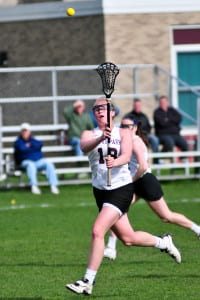
Winwood struck again for her hat trick goal, this time, off an assist from Savage, to get back up by three goals. The Kings Park lead grew to four when Winwood dished one up to Mango for an 11-7 advantage.
“We did well in transition and we slowed the offense down,” Winwood said. “They came out fast, but we came out stronger and we came to play today, so I’m really proud.”
A man up, the Bonackers took advantage of the extra stick and fired another shot home to draw within three goals, and two minutes later, found the net again to trail by two, 11-9.
Kings Park junior Kristin Frizol finished the scoring for the Kingsmen with four minutes to play, and the Bonackers wouldn’t go quietly, as they scored with 30 seconds left to play, but it was too little too late.
“The second half we took control of the game and held them defensively and we stayed calm,” said Kings Park head coach Sally Ayres. ”We kept winning the draw and we kept that three-goal lead through most of the second half.”
After Winwood’s hat trick, Savage, Mango and Cebulski added two goals each, and Slagle, Donovan and Frizol rounded out the scoring with one goal apiece.
With the win, Kings Park improved to 4-6 and needs to win three out of the next four games to ensure a postseason appearance.

